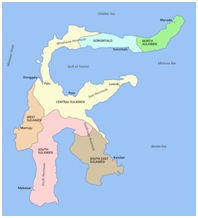Context
Researchers have alarmed regarding the decay of Pleistocene-era rock paintings which dates back to 45,000-20,000 years ago in cave sites in southern Sulawesi, on the Indonesian island of Sulawesi.
Key findings
- Scientists have warned that environmental degradation is killing one of the oldest and most precious pieces of the world’s human heritage.
- The artwork that is made with pigments is decaying due to a process known as
- Decay is triggered by the growth of salt crystals due to a repeated change in temperature and humidity.
- It is caused by alternating wet and dry weather in the region.
- Indonesia has also experienced several natural disasters in couple of years, which have quickened the process of deterioration.
About the Sulawesi Cave painting
- The cave painting depicts a wild boar endemic to the Sulawesi island of Indonesia, where the painting was found.
- It dates back to more than 45,000 years
- The painting was made using red ochre pigment.
- These pigs have been hunted by humans for tens of thousands of years and are the most commonly depicted animal in the ice age rock art of the island.
- The artwork in the area includes the world’s oldest hand stencil (almost 40,000 years ago).
- It was created by pressing the hand on a cave wall, and spraying wet red-mulberry pigments over it.
The Sulawesi island
- Sulawesi is also known as Celebes.
- It is one of the four Greater Sunda Islands which are recognized as Borneo, Java, Sulawesi and Sumatra.
- It is governed by Indonesia.
- The central Indonesian island is situated between Asia and Australia and has a long history of human occupation.
- It occupies an area of over 174,000 sq. km.

|